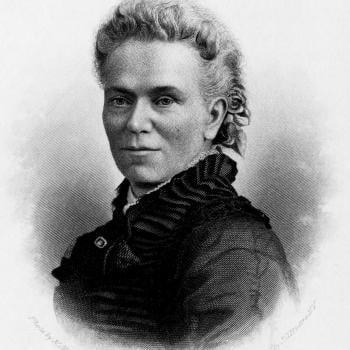My graduate course recently read Brian Levack’s The Devil Within: Possession and Exorcism in the Christian West (Yale, 2013). Levack, the author of a number of important books on witchcraft and possession in early modern Europe, notes from the outset that “demonic possession is a methodological landmine for historians.” That’s the truth! It is relatively easy to write about the history of theology or denominations, but what does one do when writing about the history of religious experiences like demon possession? This is an especially pressing question for historians writing for secular/academic presses where one cannot assume anything that the audience believes about such experiences, or that they believe in the supernatural, period.
Levack advocates an approach that, in his view, takes religious belief more seriously than many studies of witchcraft and possession, which have often asserted that what was “really going on” was fakery, manifestations of physical or mental illness, or some other modern, dismissive explanation. The key to interpreting demonic possession, according to Levack, is seeing both the afflicted and those treating them (especially exorcists) as “performers in religious dramas who were following scripts they learned from others” and from religious texts, especially the Bible. This “theatrical” interpretation is probably less controversial than it seems at first glance, because Levack repeatedly insists that most demoniacs were not faking their symptoms. Instead, they were (subconsciously) following “scripts that were encoded in their religious cultures.” This explanation sets aside the question of the supernatural quality of possessions, although it is hard to avoid the impression that Levack – who does not divulge his own views directly – is not open to any spiritual significance of possessions.
There’s no question, however, that a great deal of religious practice follows – with no lack of sincerity – cultural and churchly “scripts.” It doesn’t take long for people to learn, whether as children or those new to a church or denominational tradition, what to expect from a typical sermon, testimony, baptism, or observance of communion. And ‘scripts’ no doubt also apply in church contexts where demonic possession and deliverance are seen regularly. (Today one might expect to witness diagnoses of demon possession in certain Pentecostal churches in North America, some conservative Catholic circles, and in a number of denominations in sub-Saharan Africa, among other settings.)
But the question of “what’s really going on” seems exceptionally pressing in cases like demon possession, exorcism, and prayers of deliverance (or, one might add, miraculous healings, visions, angelic apparitions, or other transcendent experiences). Even believing historians might be hard-pressed to remain ‘open’ to reported experiences from the early modern period, or from today, especially when they are reminiscent of William Blatty’s The Exorcist, from children’s heads rotating 360 degrees, to people vomiting up demons [see picture above] or vast quantities of nails. Such reports (as well as witchcraft prosecutions) were rife in the era of the Protestant Reformation and the Catholic Counter-Reformation, and victories over dark powers became ideological ammunition in contests between Protestants and Catholics.
By the eighteenth century, witchcraft cases began a long decline in the Christian West, but demon possession declined much more slowly, and diagnoses of possession have shown signs of a renaissance among Catholics and Pentecostals in recent decade. In May 2013, there was quite a media hubbub over whether Pope Francis had performed an exorcism on a wheelchair-bound man in St. Peter’s Square.
Levack notes that whatever the state of secularization and “rational” explanations of supernatural phenomena, demon possession and deliverance were common features of both Christ’s and the apostles’ ministries. (Witchcraft, by contrast, plays a minor role in Scripture.) Because of its centrality in Scripture, it would be difficult for conservative Protestants and Catholics to get away from at least the theoretical possibility of demonic possession in the contemporary world.












